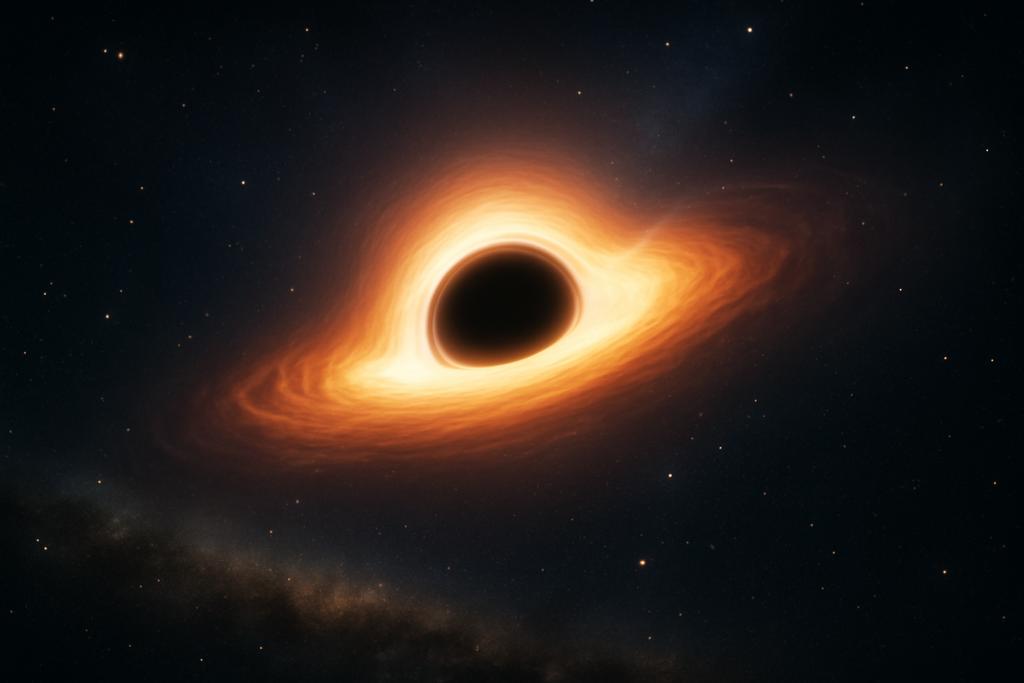Black Holes Aren’t Just Cosmic Vacuum Cleaners
At the heart of nearly every massive galaxy lurks a supermassive black hole, a gravitational beast millions to billions of times the mass of our Sun. But these cosmic giants don’t just sit quietly—they feast on gas and dust swirling around them, creating some of the brightest beacons in the universe known as active galactic nuclei (AGN). When these AGN blaze with intense light, especially in ultraviolet (UV) and X-ray wavelengths, we call them quasars. Yet, sometimes these quasars mysteriously dim or brighten, changing their appearance dramatically over surprisingly short timescales. These are the so-called “changing-look” quasars, and they’re opening a new window into the secret lives of black holes.
Why Changing-Look Quasars Are Cosmic Shape-Shifters
Changing-look quasars are like cosmic actors switching costumes mid-scene. One moment, they shine brightly with broad emission lines in their optical spectra—a signature of a luminous quasar. Then, within months or years, they fade into a low-luminosity state, losing those broad lines and resembling a much quieter AGN. This rapid transformation challenges our understanding because the processes around supermassive black holes were thought to evolve on timescales far longer than human lifetimes.
Olivier Gilbert and colleagues from Bishop’s University, Penn State, Harvard-Smithsonian Center for Astrophysics, and other institutions have taken advantage of these rare cosmic shape-shifters to peer into the evolving structure of the accretion flows—the swirling disks of gas feeding the black holes—especially when these black holes are in a low-luminosity state. Their study, recently submitted to The Astrophysical Journal, uses multi-epoch observations combining the sharp eyes of NASA’s Chandra X-ray Observatory and the Hubble Space Telescope (HST) to track how the energy output of three faded changing-look quasars evolves over time.
Drawing Parallels Between Giants and Their Smaller Cousins
One of the most intriguing aspects of black hole physics is the striking similarity between supermassive black holes in AGN and their smaller cousins—stellar-mass black holes in X-ray binary systems within our own galaxy. These X-ray binaries flicker and flare on timescales of days to weeks as they gobble up matter from a companion star, transitioning between bright, soft X-ray states dominated by a thin accretion disk, and faint, hard X-ray states dominated by a hot, energetic corona.
Scientists have long suspected that supermassive black holes might behave similarly, but the vast difference in mass means their outbursts should last hundreds of thousands of years—far too slow to observe directly. Changing-look quasars, however, defy this expectation by shifting states in just a few years, providing a rare chance to test whether the accretion physics scales up from stellar-mass to supermassive black holes.
Tracking the Changing Glow: The UV-to-X-ray Spectral Index
Gilbert and his team focused on a key diagnostic called the UV-to-X-ray spectral index, denoted as αOX. This index measures the relative brightness of the quasar’s UV emission—primarily from the accretion disk—and its X-ray emission, which is thought to come from a hot corona of energetic particles above the disk. Changes in αOX reveal how the geometry and energy balance of the disk-corona system evolve as the black hole’s feeding rate changes.
In X-ray binaries, as the accretion rate drops below about 1% of the Eddington limit (a theoretical maximum luminosity), the X-ray spectrum hardens—meaning the corona dominates more—and αOX decreases. Above this threshold, the disk dominates and αOX increases. The question was: do changing-look quasars follow this same pattern?
Confirming the Cosmic Dance
By obtaining a second set of observations for three faded changing-look quasars, the researchers found that as these quasars brightened or dimmed within their low-luminosity states (below 1% Eddington ratio), their αOX values changed in a way that mirrored the behavior of X-ray binaries. Specifically, when the quasars got brighter, their spectra hardened (αOX decreased), and when they dimmed, their spectra softened (αOX increased). This “harder-when-brighter” trend confirms that the accretion flows around supermassive black holes evolve similarly to those around stellar-mass black holes, even at very low feeding rates.
Why This Matters: A Unified Picture of Black Hole Accretion
This discovery is more than a neat cosmic coincidence. It suggests that the physical processes governing accretion—the way matter spirals into black holes and releases energy—are fundamentally the same across an enormous range of black hole masses and luminosities. Models developed to explain the behavior of X-ray binaries can now be applied to AGN, and vice versa, providing a powerful framework to understand black hole growth and feedback in galaxies.
Moreover, the study highlights the importance of multi-epoch, multiwavelength observations to capture the dynamic lives of AGN. Future surveys like the Rubin Observatory’s Legacy Survey of Space and Time (LSST) will discover many more changing-look quasars, while next-generation UV and X-ray observatories will enable detailed monitoring of their spectral energy distributions. Together, these efforts promise to unravel the complex interplay between black holes and their cosmic environments.
Looking Ahead: The Challenges and Opportunities
Despite these advances, many mysteries remain. The exact structure of the accretion flow at low luminosities is still debated. Some models suggest new emission components, like jet synchrotron radiation, might dominate in these faint states. Distinguishing between these scenarios requires even more precise observations and theoretical work.
Gilbert and colleagues’ work is a crucial step toward a unified understanding of black hole accretion physics. By watching black holes play dress-up and change their glow, we’re learning that the cosmic dance of matter and energy around these enigmatic objects follows a rhythm that echoes across the universe, from the smallest stellar remnants to the most massive galactic cores.










